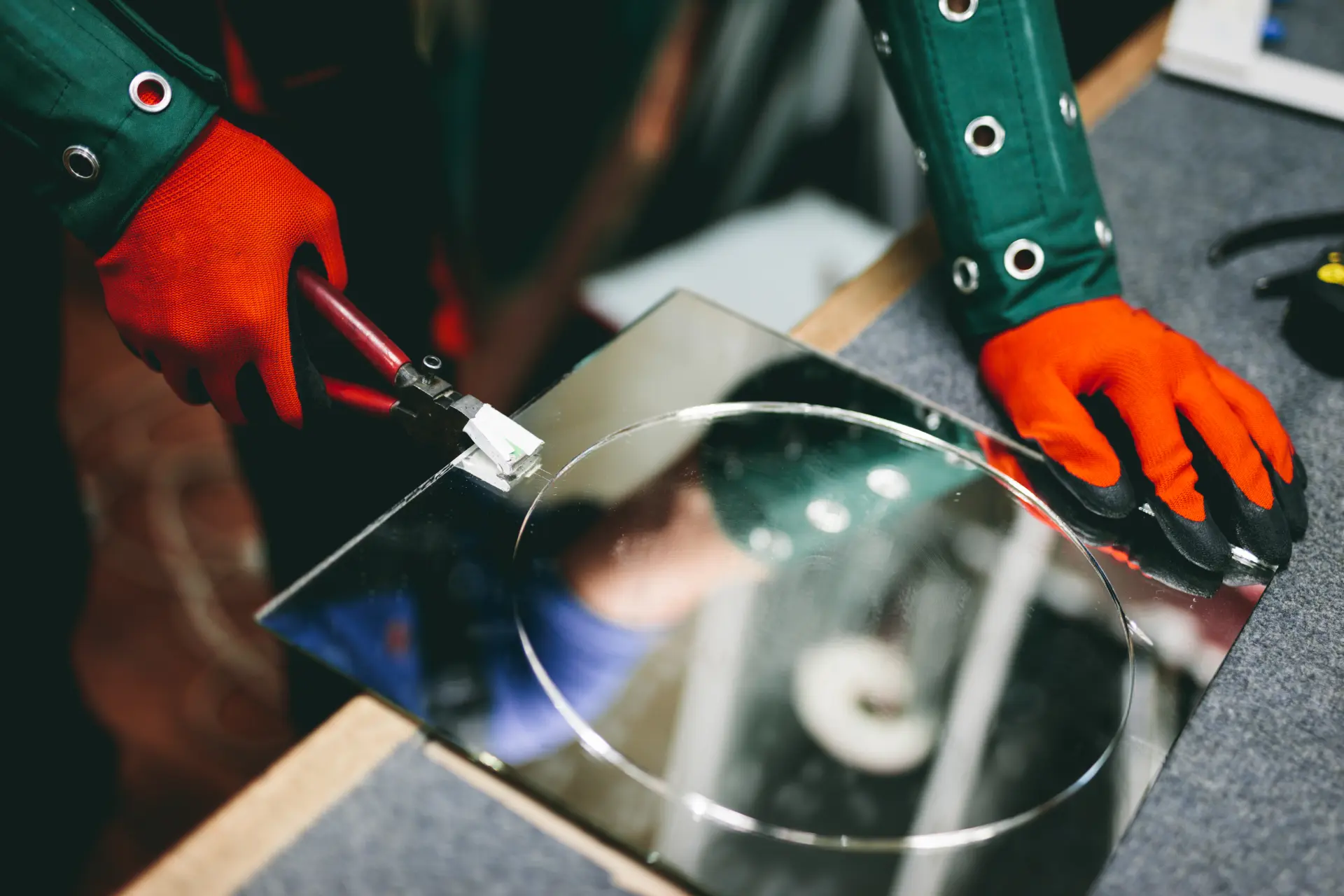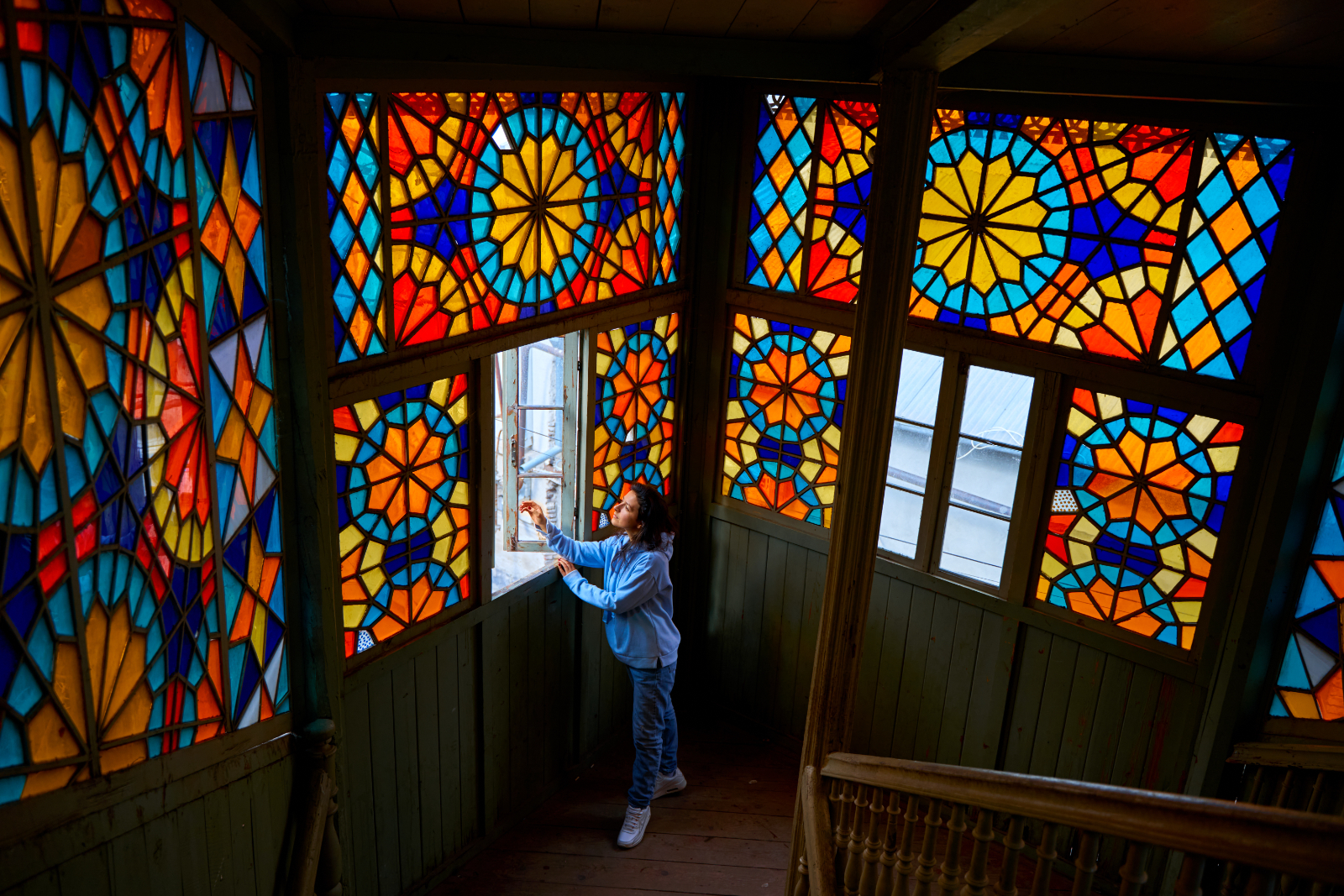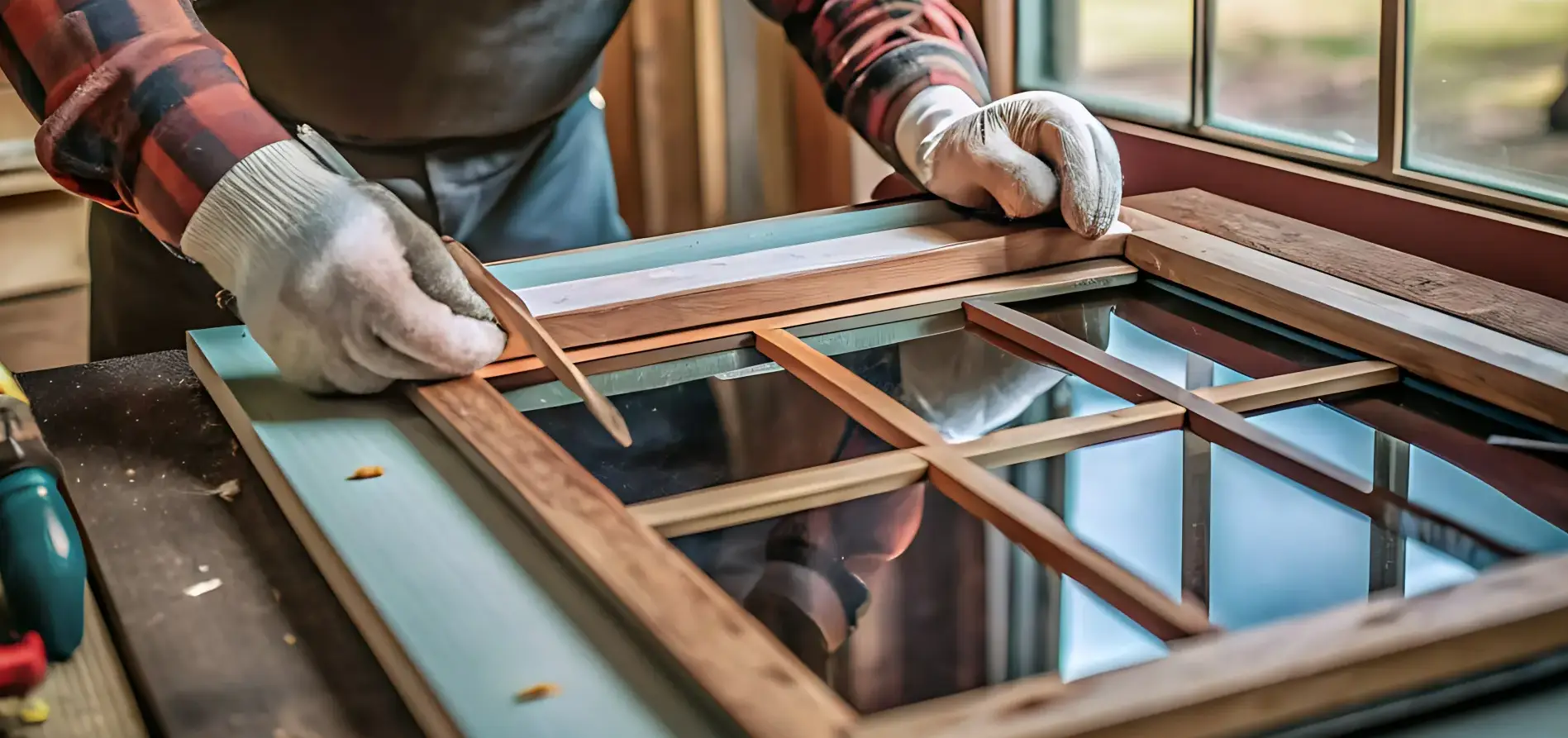Discover how brilliant cut glass windows are made, from selecting materials like lead crystal to intricate pattern design that ensures sparkling, durable stained glass effects.
Materials Used in Brilliant Cut Glass
Brilliant cut glass windows are admired for their sparkle and fine detail, but the quality of the materials used is what makes them so striking. The choice of glass and supporting elements directly affects the clarity, brightness and durability of the finished piece. The most common material for brilliant cut glass is lead crystal.
This type of glass contains lead oxide, which makes it softer and easier to cut than standard glass. The lead also increases the glass’s refractive index, meaning it bends light more strongly. This is what gives brilliant cut glass its dazzling sparkle, especially when placed in windows where natural light can pass through.
In some cases, soda-lime glass may be used as a more affordable alternative. Although it is not as bright or easy to cut as lead crystal, it can still be polished and shaped to achieve decorative effects. However, its sparkle is more subdued compared to true lead crystal. To create windows, the cut glass is often set into lead canes or metal frameworks.
These hold each piece in place while also allowing plenty of light to shine through. The use of lead canes has been traditional for centuries, and it continues to be a practical method that many in the industry use for building glass panels.
Designing the Pattern
The design of the pattern is one of the most important stages in creating brilliant cut glass windows. The pattern not only decides the overall look of the window but also how light will move through the cuts and shapes.
Before cutting begins, a detailed layout is drawn on paper or directly onto the glass surface. This plan guides the craftsman and ensures that the design is balanced and symmetrical. Patterns often feature geometric shapes such as stars, diamonds and fans, which create striking effects when light passes through.

Many brilliant cut glass designs are inspired by traditional motifs that have been used for centuries. However, modern makers often blend these classic styles with new creative ideas. This allows each piece to be unique while still keeping the sharp brilliance that defines the craft.
When designing a pattern, great care is taken to think about how each cut will catch and reflect light. The angles, depth and spacing of the cuts are planned so that the window sparkles and changes appearance as the light shifts throughout the day.
Symmetry plays a key role in the design process. A well-balanced pattern allows the final window to look refined and professional. Even the smallest misalignment can reduce the brilliance of the finished piece, which is why pattern design requires patience and accuracy.
Preparing the Glass for Cutting
Before any decorative work can begin, the glass must be carefully prepared. This step is essential to make sure the surface is smooth, clean and ready for precise cutting. The process starts with choosing the right piece of glass. For brilliant cut glass, lead crystal is often preferred because it is softer than ordinary glass and easier to cut.
Each sheet or pane is inspected for clarity and thickness to ensure it will give the best sparkle once the cutting is complete. Any dirt, dust or grease you find on the glass tends to interfere with cutting. The surface is thoroughly cleaned using special solutions to remove even the smallest particles. A spotless surface allows the cutting tools to move smoothly and prevents scratches or uneven marks.
Once clean, the chosen pattern is marked onto the glass. This can be done with a stencil, a guide drawing or fine marking tools. The marks are light but clear enough to guide the craftsman during cutting. Accuracy at this stage ensures that the final design is balanced and symmetrical. Before cutting begins, the glass is carefully fixed in place. It is often set on a stable surface or held with supports to stop movement. This prevents accidents and helps the cuts remain sharp and precise.
The Cutting Process and Tools Involved
The cutting stage is where the glass is then transformed from a plain sheet into a brilliant, sparkling design. This process requires lots of skill, steady hands and the right tools to create sharp, clean lines that catch the light beautifully. The main tool used in cutting is a diamond-tipped wheel. Diamonds are harder than glass, which makes them perfect for carving fine lines and shapes into the surface. These wheels come in different sizes to create cuts of various depths and widths, depending on the pattern.
The craftsman follows the marked design with great care, guiding the wheel over the glass. Each cut must be precise, as even a small mistake can spoil the symmetry of the pattern. The depth of each cut is carefully controlled to ensure the glass sparkles without becoming weak or fragile.

After the initial cuts are made, polishing wheels and powders are used to smooth the rough edges. This step removes any small chips and gives the cuts a clean, bright finish. The polishing also improves the way light reflects and refracts through the design.
To keep the glass safe during cutting, special supports and clamps are often used. These hold the glass steady and reduce the risk of cracking. Water or oil may also be applied to cool the glass and tools, preventing overheating and damage.
Adding Colour or Decorative Elements
While brilliant cut glass is most admired for its sparkle and clarity, adding colour or extra decoration can make the windows even more striking. These additions bring depth, variety and personal style to the finished piece. One common method is to stain or paint parts of the glass. Special glass paints are applied to chosen areas, then fired in a kiln to set the colour permanently.
This technique allows detailed images, patterns or borders to be included alongside the cut designs. Instead of clear glass alone, coloured sections can be inserted into the design. These pieces are cut and shaped in the same way as clear glass, then fitted into the framework. When light shines through, the combination of colour and brilliant cuts creates a vivid, eye-catching effect.
Additional decoration may be achieved through etching or engraving. Acid etching gives a frosted appearance, while engraving adds fine details that complement the deeper cuts. These methods are often used to add delicate features without overwhelming the main pattern. The glass can also be paired with decorative metal elements. Lead canes or metal borders hold the pieces together but can also be shaped into designs that improve the overall appearance. This adds another key layer of style to the window.
At R.S. Glass Design Limited, we take pride in offering expert glass design services across Bolton, Lancashire and the UK. If you have questions about our traditional glass services or want to discuss a bespoke project, allow our friendly team to assist. Get in touch today through our contact form or give us a call.


